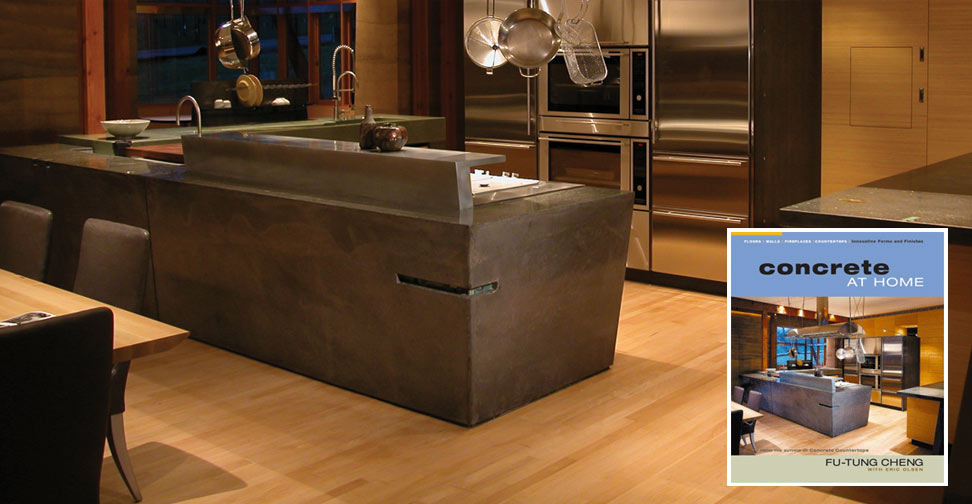The New Orleans Times — Picayune
by Jane Dupuy
Over the past decade, “green building” has become a buzzword. It refers to using sustainable materials and creating healthier and more resource-efficient environments. Concrete fits right in with that movement. Concrete, valued for its strength and durability, is a mixture of cement, water and aggregates. It is low-maintenance and produces minimal waste. More relevant to our area, when concrete is used for its exterior, a building may fare better against hurricanes. Concrete floors can survive a flood, whereas wood floors are ruined. For those who think of concrete as a cold, gray material with little aesthetic appeal, a whole new wave of artists, architects and designers are making elegant and graceful buildings and interiors from this ugly-duckling material.
Concrete At Home
“Concrete at Home”, Fu-Tung Cheng’s second book Poetry may not be the first word that springs to mind when you think about concrete, but there is just no other way to describe the infinitely diverse formations for which Fu-Tung Cheng, an artisan from Berkeley, Calif., is renowned. Imagine a 12-foot expanse of smooth, glass-like concrete countertops crowned with bullet-shaped sinks that cleverly conceal not only the drains but the underlying support as well. In less capable hands, it could be a slick monstrosity too cold and imposing for a room we associate with soothing luxury. Cheng makes it velvety, light and tactile. With this book, his second on the subject, Cheng hopes to change the public’s perception of this unassuming raw material.
The book, part how-to, part theory and part dream album, covers designs for countertops, walls, floors, mantles, range hoods and landscape design. Some concrete elements are poured on site, and some are poured in a studio and then delivered to the site. With behind-the-scenes looks at 22 projects, Cheng shows how cast-concrete blocks and recycled concrete “stones” salvaged from the dump are now just as chic as granite, marble or the rarest wood.
Concrete, which Cheng calls “liquid stone,” frees the design. For instance, making relatively simple arcs and curves in concrete can help in small spaces, like a kitchen, where straight walls could hinder the layout. “A curved wall or island allows you to push the maximums and minimums [dimensions],” writes Cheng. He encourages homeowners to find their own expression in concrete by using decorative inlays or adding aggregates such as jadeite or glass, producing a terrazzo-like effect. The finished product can be tinted, ground, polished or stamped with a pattern. The possibilities are limited only by one’s imagination. More photographs and information can be found at www.chengdesign.com.

